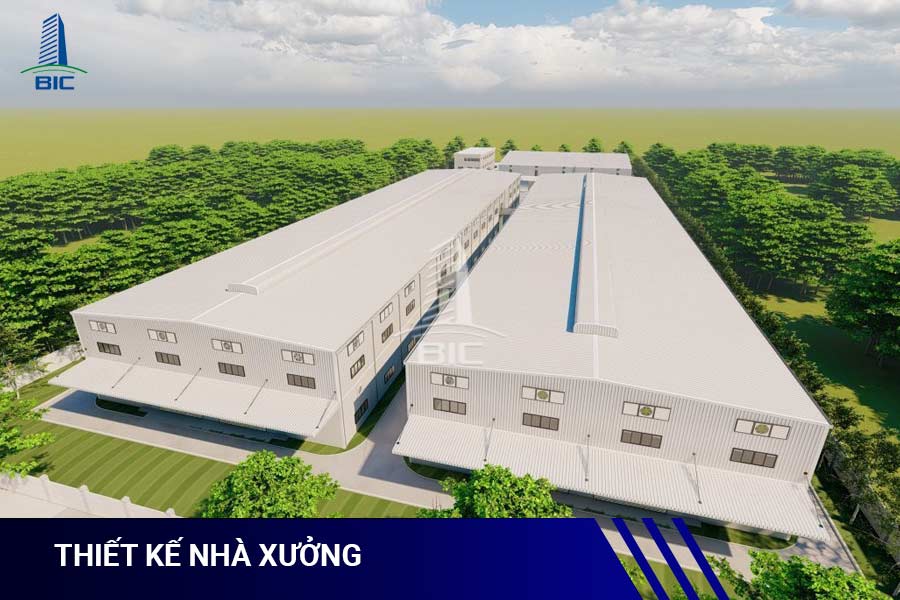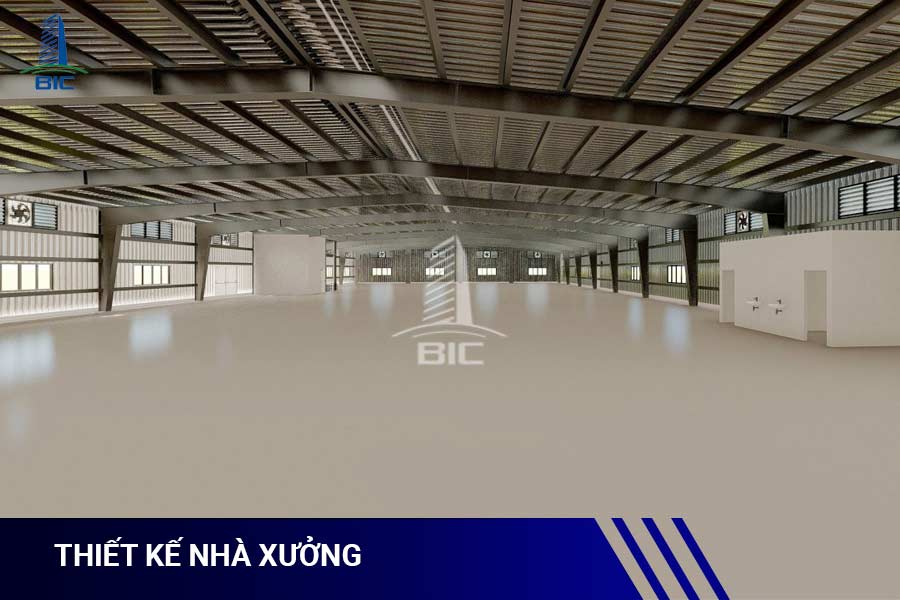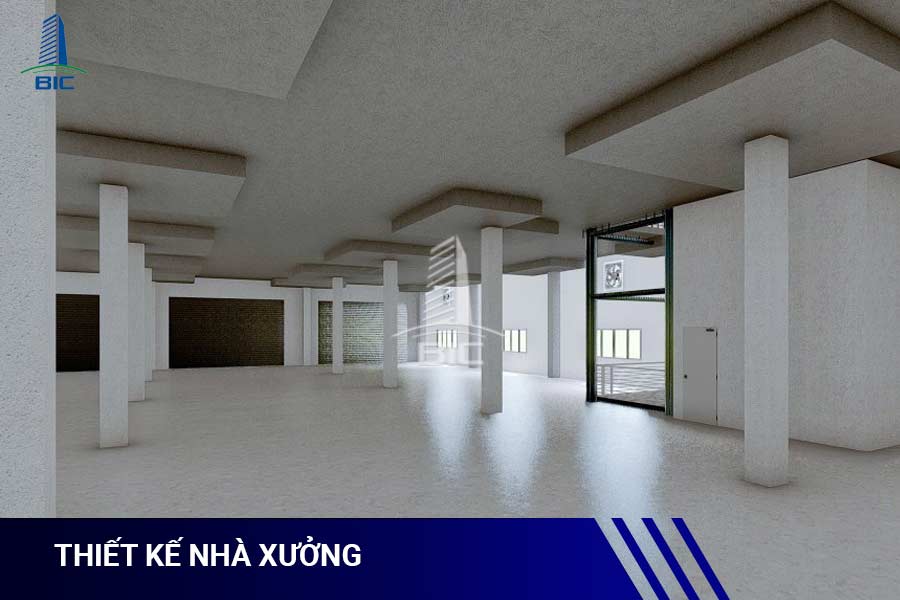
Ensuring labor safety right from the design stage of a factory is a fundamental requirement in industrial construction. A safety-oriented design solution not only protects the health and lives of workers but also enhances production efficiency and minimizes losses for enterprises. Strict compliance with safety standards in every design stage reflects not only legal responsibility but also enhances the investor’s reputation while building a sustainable and safe working environment for workers.
BIC is a leading company in industrial factory design and construction. With extensive experience and a team of professional engineers, BIC always emphasizes integrating labor safety criteria into every project. The construction team at BIC strictly adheres to all safety and technical standards, ensuring every project implemented by the company meets the highest quality standards. Thanks to this, BIC helps investors build factories that are not only technically efficient but also safe, contributing to increased value and sustainable growth for their businesses.
The system of standards and regulations on occupational safety in factory design construction in Vietnam serves as a foundation for risk control right from the planning stage. Every aspect of factory design from architecture, structure to mechanical and electrical systems and fire protection must strictly comply with the regulations of the Ministry of Construction and the Ministry of Labor to ensure safe working conditions, health, and life protection for workers.
The Law on Occupational Safety and Hygiene (2015) clearly stipulates the responsibilities of investors and design units in ensuring worker safety. In addition, QCVN 18:2014/BXD is the national technical regulation on safety in construction and operation, requiring all factory projects to be designed, constructed, and accepted in accordance with approved technical standards. These regulations form a legal framework for consistent implementation from design to construction, preventing potential risks or legal violations.

During the design process, architects and engineers must comply with TCVN 2737:2023 (Loads and Effects), TCVN 5574:2018 (Reinforced Concrete Structures), and TCVN 5575:2012 (Steel Structures) to ensure that the factory can withstand loads, vibrations, and maintain long-term stability. For factories using flammable materials or operating under high temperatures, the selection of fire-resistant materials according to QCVN 06:2023/BXD and TCVN 2622:1995 is mandatory.
In addition to structural aspects, fire protection systems must be designed according to TCVN 5738:2021 and TCVN 7336:2021, including automatic fire alarms, wall hydrant systems, and sprinklers. Escape routes must ensure appropriate dimensions and quantity according to capacity. The electrical and lighting systems should follow TCVN 9206:2012 and TCXDVN 333:2005 to ensure adequate working illumination and prevent electrical short circuits or overloads.
To effectively implement labor safety standards, BIC always recommends that investors strictly control every stage from design approval, material selection to technical acceptance. The design and construction unit must take responsibility for integrating all Vietnamese Standards (TCVN, QCVN) into each detailed drawing, while coordinating with fire protection, electrical, water, and relevant authorities for design appraisal before construction.
By adhering to the system of standards from the design phase, industrial factories not only meet legal requirements but also operate sustainably, minimizing workplace accidents and maintenance costs. With real-world experience from hundreds of projects, BIC is committed to strictly applying Vietnamese standards to deliver safe, optimized, and effective design solutions for every project.

The application of labor safety standards in factory design is not only a legal requirement but also directly affects the quality and operational efficiency of the facility. A properly designed plan helps minimize construction risks, prevent labor accidents, and ensure optimal working conditions for employees.
Right from the master planning stage, architects and engineers must follow QCVN 18:2014/BXD and TCVN 4319:2012 to determine appropriate locations for production areas, storage, offices, and auxiliary infrastructure. A scientifically organized layout helps control movement of people and vehicles, reducing collision, fire, and pollution risks. Clearly defining safety boundaries between production and administrative areas also helps maintain order and improve management efficiency.
In practice, many factories face incidents due to inadequate or improperly designed ventilation and electrical systems. To avoid such risks, BIC always requires its design team to comply with TCVN 5687:2010 on ventilation and air conditioning, and TCVN 9206:2012 on electrical systems in industrial buildings. Technical parameters are calculated in detail based on heat load, equipment density, and number of workers to ensure consistent fresh air flow, avoiding accumulation of dust, smoke, or toxic gases in the workshop.
For fire protection systems, implementation according to QCVN 06:2023/BXD and TCVN 7336:2021 ensures compliance with approval requirements from competent authorities. Every BIC project includes detailed drawings for escape routes, placement of fire extinguishers, automatic alarm systems, and dedicated fire pumps. This not only ensures compliance but also demonstrates BIC’s commitment to prioritizing safety above all.

Applying standards should not stop at the design phase but must be maintained throughout construction. BIC implements an independent supervision system to check materials, construction methods, and on-site labor safety. Safety engineers regularly assess risks, remind workers to comply with protective regulations, and inspect the stability of scaffolding, electrical systems, and elevated work areas. This approach not only ensures acceptance standards but also fosters a culture of safe working practices across the workforce.
Beyond technical aspects, BIC places great emphasis on training its personnel in occupational safety and compliance culture. From architects and engineers to workers, everyone undergoes periodic training on emergency response, use of protective equipment, and safe operation of technical systems. Human factors are the key link in maintaining a safe, efficient, and sustainable working environment for the entire factory.
By integrating technical design, legal regulations, and safety awareness, BIC’s projects consistently achieve absolute safety certification while delivering long-term operational value for investors.
Complying with labor safety standards (TCVN, QCVN) in factory design is not only a legal requirement but also a statement of corporate social responsibility. Investing in safe design helps reduce risks and accidents, thereby enhancing productivity and corporate reputation.
For industrial factories, ventilation, lighting, electrical, fire protection, and safety signage systems should be prioritized from the conceptual stage. Investors and architects should collaborate with specialized units to ensure that all safety standards in construction are fully applied. This creates a safe, worker-friendly, and sustainable production environment for businesses.
Compliance with labor safety standards in factory design and construction is both a legal obligation and a commitment to sustainable development. A properly designed factory helps reduce accidents, protect assets, maintain productivity, and strengthen brand reputation. When safety is factored in from the design phase, investors can control technical risks, optimize maintenance costs, and ensure stable production for many years.

For investors and architects, mastering and consistently applying TCVN and QCVN standards in every design element from layout, load-bearing structures, fire protection, ventilation, lighting, to safety signage and escape routes is essential to create a safe, modern, and legally compliant working environment.
With experience in hundreds of industrial projects nationwide, BIC always places labor safety as the top priority in every design. Each project undertaken by BIC undergoes rigorous technical review in accordance with national standards, integrating practical solutions that ensure both safety compliance and investment efficiency. This is why BIC has become a trusted partner for many enterprises in the field of industrial factory design and construction in Vietnam.
Serious investment in safety design is the foundation for a stable, efficient, and sustainable factory operation something BIC consistently strives for in every project.